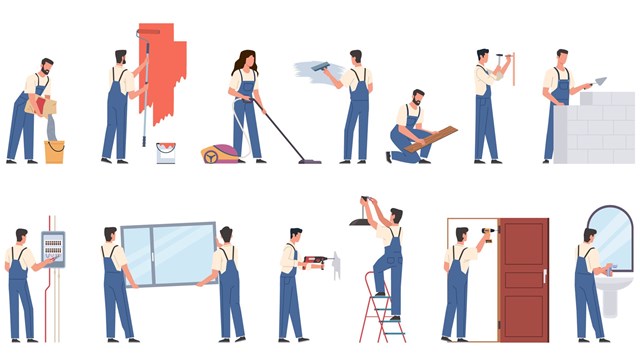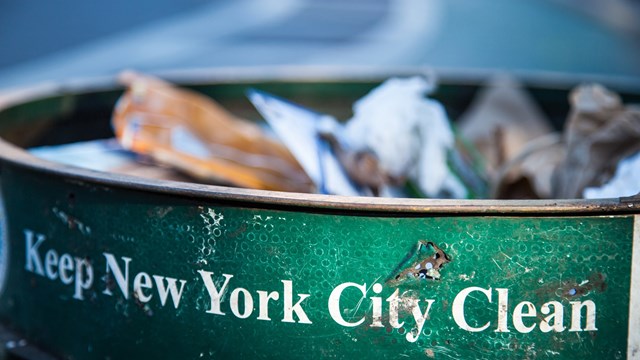
For building boards, management companies, shareholders, and unit owners, the issue of insurance often becomes complicated: how much insurance - and of what kind - does one's building, or even a shareholder/tenant, need? Is there such a thing as too much coverage? How does a board know if they're adequately insured? And, more importantly, what does that policy protect, or not protect? Then there's the issue of liability within the home, and whose insurance company is responsible.
Barbara Strauss, executive vice president for York International Agency, an insurance brokerage in Manhattan, says every co-op building should have a package policy, which consists of property and liability insurance. "You should also have an umbrella policy, a fidelity bond, a director's and officer's liability policy, a worker's compensation policy and a New York State disability policy," she adds. "Those are the standard policies that every co-op should carry."
According to Nancy Gelardi, senior vice president of Arthur J. Gallagher, a brokerage based in White Plains, New York, those standard "policies would cover physical damage to the building, as well as any suits made against the building if anybody should be injured."
New York State disability insurance is required along with worker's compensation insurance, according to Alex Seaman, a senior vice president with Kaye Insurance Associates in Long Island. This coverage provides a benefit of up to $170 a week for a maximum of 26 weeks for a non-work related disability. This could include maternity leave for an employee or a sports-related injury that occurs at a property. Buildings also insure their operating equipment, Seaman adds. "Almost every property has boiler and machinery insurance along with their property insurance. General liability and Directors and Officers insurance are typically purchased at limits of $1 million. Umbrella or excess liability insurance provides additional coverage above that amount."
Insurance costs are also dictated by a building's square footage. Strauss says her firm often assigns costs using construction factors that are in use today to develop a value. "It makes a difference if you're a fire-resistant building, or if you're a jointed masonry building, for example. On fire-resistant buildings you insure anywhere from $170 to $200 a square-foot, and on brick buildings you buy anywhere from $130 to $150 a square-foot."
"You insure the building for what it would cost against [various] perils up to the replacement cost of the building," Gelardi says. "You either insure it up to one hundred percent or sometimes only up to ninety percent of the true replacement value."
Historical or landmarked buildings could have an even higher valuation than $200 a square-foot, Seaman explains. "A typical insurance premium," says Seaman, "is primarily based on a number of factors, including property replacement cost, occupancy [i.e. number of units], location, and claims history."
If your policy has exclusions, Strauss recommends buying some back. Those include building ordinance and law, increased cost of construction and demolition, flood, earthquake, backup of sewers, and underground water mains. Strauss says that although those exclusions are standard, some types of environmental coverage might also be excluded from a property policy. Lead and mold are sometimes a common exclusion on a liability policy, according to Seaman, but a separate environmental policy will cover those areas. "Mold is becoming an increasingly more common exclusion. Mold is present in virtually every building and it's difficult, if not impossible, to provide coverage for it indefinitely," Seaman says.
Cathy Torres of Campbell Solberg, an insurance brokerage based in Manhattan, recommends selecting coverage carefully. "The board's policy covers the building, and it covers the mortgage for each individual shareholder," she explains. "But there isn't anything you could add from your personal insurance to theirs, because they cover the building itself - not the unit - for loss." Therefore, she says, shareholders and owners must carry their own policy. "They're not going to get the full amount, because they're responsible for that apartment, and the building itself is not going to cover it," Torres says.
Individual policies apply directly to the unit and any potential damage it may sustain. "It covers from the stud in," Torres explains, "and it's their responsibility to have insurance in place in case that wall has to be torn out or there's a fire and they lose the whole kitchen." She says everything must be replaced by person living there. "The building might cover the damage to the pipe, but they're not going to cover the wall itself," Torres says.
Strauss says taking out individual protection is "not just a recommendation, as some of the proprietary leases and bylaws suggest - a lot of house rules are now insisting that you have that policy." She says a building's umbrella policy doesn't protect the individual shareholder in their own unit. "An umbrella is strictly a third party liability coverage protection," Strauss says.
Although many types of coverage are available, the same principles apply to co-ops and condos, both of which generally require shareholders and owners to carry personal property coverage. "It's like [renter's] insurance," says Torres. "The difference is that you own the property, and you're responsible for the walls, the ceilings and the floor."
Torres says that, to help clients determine the appropriate level of personal coverage, "I usually tell them to go to Home Depot and see just how much it would cost them to replace the cabinets and the countertops, or how much it would cost to replace the floors." Based on that, she says, the client can determine their level of coverage should be, or whether the coverage they already have is adequate.
Loss assessment - which applies to any common areas or amenities in the building for which one is assessed maintenance - constitutes another portion of the policy. According to Torres, liability is also important. "The most liability you can get on a normal policy is $500,000 - that's the max," she says. "And I usually recommend [insuring for] the full $500,000." Torres says the costs of policies vary. "Let's say for instance you get a $50,000 personal property policy, $11,000 of additions and alterations coverage, and $500,000 in liability and all the other coverage. The most expensive part of that policy is the additions and alterations and the dwelling amount."
A good insurance policy will do more than protect the building itself - it also protects the people within the building from litigation. "They could get an umbrella policy on top of the policy they buy," Torres says. "That would protect them against any liability suit against them."
"If anyone is injured within the unit, that's the responsibility of the shareholder," Gelardi says. However, she adds, if someone like the super is there at the behest of the shareholder, it would probably be covered by worker's compensation. If he is injured while visiting socially, the homeowner's insurance kicks in.
"A homeowner, condo owner, or co-op owner's policy is a policy that's written to protect you - the individual," Strauss adds. "It will cover you for your content, and then for your personal liability." For example, she says, if you inadvertently damage the unit below you, you're responsible. "I consider that standard coverage that everybody needs to protect themselves with," she says. "You're responsible for the inside of your unit." In addition, she says, those policies are not expensive. Strauss says one can buy a policy for $500 a year that will offer $40,000 to $50,000 worth of personal property and a half a million dollars liability. That, she says, "is not something that should be over and above anyone's needs."
Strauss says the board calls the shots when deciding on the building's policy after the broker presents the policies to board and management. However, she says boards often make several mistakes when buying coverage. "One of the biggest issues I see is that buildings don't insure for the full replacement costs - and they should," Strauss explains. "It's extremely important that you make sure the value that you carry on the building is enough to fully replace it in the event of a total loss." She says many buildings either do not take out an umbrella policy or opt for a smaller one. "The cost of an umbrella policy is not really that expensive today," Strauss says, compared to the $25 million to $100 million it could cost to replace a decimated building.
If a building cuts back on any portion of their policy, Torres says, "it will usually be the liability portion, and I think they underestimate that all the time." If someone is injured, she explains, the building will come up short - and whatever money they saved on their policy (and probably much more) will be spent on out-of-pocket costs.
"It's a mistake to take the cheapest price when it may not be the broadest or the best coverage available," Gelardi says. Sometimes, she continues, clients just look at the premium, and if there's a potential for savings, they don't look beyond that. "The most expensive policy is not necessarily the best policy either," she adds. "Trying to reduce coverage to save money is also a mistake."
Strauss says boards should meet with their insurance broker and discuss replacement costs, a wavier of co-insurance, business income insurance, law coverage, and even a slightly higher deductible.
"They want to make sure they have dwelling, personal property, liability, loss assessment, and water backup - these are the five most important parts of the policy that they should get," Torres says. "Those are also the five things the person talking to them should offer them."
By asking the right questions and recognizing it as an investment, in the long run you may save your building countless dollars in litigation and damage costs by carefully selecting the right insurance package.






Leave a Comment